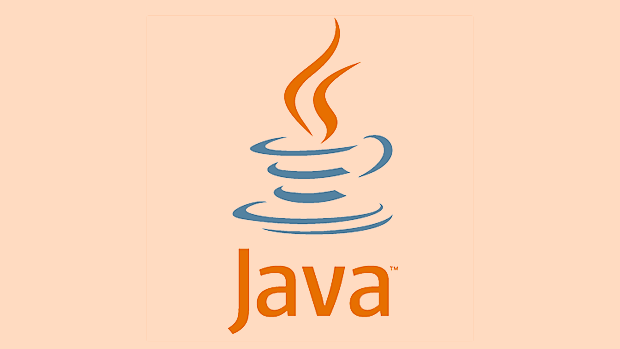使用REDIS在Java應用程序中實現緩存
安装并运行Redis,使用Docker命令启动Redis服务;2. 在Maven项目中添加Jedis或Spring Boot的Redis依赖;3. 使用Jedis客户端连接Redis并实现setex设置带过期时间的缓存,注意关闭连接或使用连接池;4. 在Spring Boot中通过application.yml配置Redis参数,启用@EnableCaching注解并使用@Cacheable、@CachePut、@CacheEvict实现方法级缓存;5. 自定义RedisTemplate使用Jackson2JsonRedisSerializer序列化复杂对象为JSON格式以提升可读性和性能;6. 遵循最佳实践:设置TTL避免内存泄漏,使用有意义的键名,优雅处理缓存未命中,生产环境使用连接池,并监控Redis状态。通过这些步骤,Java应用能高效集成Redis缓存,显著降低数据库负载并提升响应速度,最终实现高性能的数据访问层。

Caching in a Java application can significantly improve performance by reducing database load and speeding up response times. Redis is one of the most popular in-memory data stores used for caching due to its speed, flexibility, and rich feature set. Here's how to implement Redis-based caching in a Java application.

1. Set Up Redis and Dependencies
First, make sure Redis is installed and running. You can download it from redis.io or use Docker:
docker run -p 6379:6379 --name redis-server -d redis
Then, add the required dependencies to your pom.xml (for Maven):

<dependency>
<groupId>redis.clients</groupId>
<artifactId>jedis</artifactId>
<version>4.5.0</version> <!-- Use latest stable -->
</dependency>Alternatively, if you're using Spring Boot, include:
<dependency>
<groupId>org.springframework.boot</groupId>
<artifactId>spring-boot-starter-data-redis</artifactId>
</dependency>2. Connect to Redis Using Jedis (Standalone)
Jedis is a lightweight Redis client for Java. Here's a simple example to connect and use Redis:

import redis.clients.jedis.Jedis;
public class RedisCache {
private Jedis jedis;
public RedisCache() {
this.jedis = new Jedis("localhost", 6379);
}
public void set(String key, String value) {
jedis.setex(key, 3600, value); // Cache for 1 hour
}
public String get(String key) {
return jedis.get(key);
}
public void close() {
if (jedis != null) {
jedis.close();
}
}
}setex(key, seconds, value)sets a key with an expiration time (TTL), which is essential for avoiding stale data.- Always close the connection or use a connection pool in production.
3. Use Redis with Spring Boot (Recommended)
Spring Boot simplifies Redis integration with auto-configuration and annotation-based caching.
Configure application.yml:
spring:
redis:
host: localhost
port: 6379
cache:
type: redis
redis:
time-to-live: 3600000 # 1 hour in millisecondsEnable Caching:
Add @EnableCaching to your main application class:
@SpringBootApplication
@EnableCaching
public class Application {
public static void main(String[] args) {
SpringApplication.run(Application.class, args);
}
}Use Caching Annotations:
Apply @Cacheable, @CachePut, and @CacheEvict on service methods:
@Service
public class UserService {
@Cacheable(value = "users", key = "#id")
public User getUserById(Long id) {
System.out.println("Fetching user from DB: " id);
// Simulate DB call
return userRepository.findById(id).orElse(null);
}
@CachePut(value = "users", key = "#user.id")
public User updateUser(User user) {
// Update user and update cache
return userRepository.save(user);
}
@CacheEvict(value = "users", key = "#id")
public void deleteUser(Long id) {
userRepository.deleteById(id);
}
}This automatically caches the result of getUserById() so subsequent calls with the same ID skip the database.
4. Serialize Complex Objects
By default, Spring uses JDK serialization, which is not efficient. Customize the Redis template to use JSON:
@Configuration
@EnableCaching
public class RedisConfig {
@Bean
public RedisTemplate<String, Object> redisTemplate(RedisConnectionFactory factory) {
RedisTemplate<String, Object> template = new RedisTemplate<>();
template.setConnectionFactory(factory);
// Use Jackson2JsonRedisSerializer for better readability
Jackson2JsonRedisSerializer<User> serializer = new Jackson2JsonRedisSerializer<>(User.class);
template.setValueSerializer(serializer);
template.setKeySerializer(new StringRedisSerializer());
template.setHashKeySerializer(new StringRedisSerializer());
template.setHashValueSerializer(serializer);
template.afterPropertiesSet();
return template;
}
}Now, complex objects like User are stored in readable JSON format in Redis.
5. Best Practices
- Set TTL (Time to Live): Always set expiration on cached data to avoid memory leaks.
-
Use Meaningful Keys: Structure keys like
user::123orproduct:category:latest. - Handle Cache Misses Gracefully: If Redis is down, fall back to the database (and log the issue).
- Use Connection Pooling: In production, configure Jedis or Lettuce with pooling.
-
Monitor Redis: Use
redis-cli monitoror tools like RedisInsight to inspect cache usage.
Conclusion
Using Redis for caching in Java—especially with Spring Boot—can dramatically boost performance with minimal code changes. Whether you're using raw Jedis for fine control or Spring’s declarative caching for simplicity, Redis provides a fast, reliable layer between your app and slow data sources.
Basically: connect Redis, cache method results, serialize smartly, and expire data wisely. That’s the core.
以上是使用REDIS在Java應用程序中實現緩存的詳細內容。更多資訊請關注PHP中文網其他相關文章!

熱AI工具

Undress AI Tool
免費脫衣圖片

Undresser.AI Undress
人工智慧驅動的應用程序,用於創建逼真的裸體照片

AI Clothes Remover
用於從照片中去除衣服的線上人工智慧工具。

Clothoff.io
AI脫衣器

Video Face Swap
使用我們完全免費的人工智慧換臉工具,輕鬆在任何影片中換臉!

熱門文章

熱工具

記事本++7.3.1
好用且免費的程式碼編輯器

SublimeText3漢化版
中文版,非常好用

禪工作室 13.0.1
強大的PHP整合開發環境

Dreamweaver CS6
視覺化網頁開發工具

SublimeText3 Mac版
神級程式碼編輯軟體(SublimeText3)
 Hashmap在Java內部如何工作?
Jul 15, 2025 am 03:10 AM
Hashmap在Java內部如何工作?
Jul 15, 2025 am 03:10 AM
HashMap在Java中通過哈希表實現鍵值對存儲,其核心在於快速定位數據位置。 1.首先使用鍵的hashCode()方法生成哈希值,並通過位運算轉換為數組索引;2.不同對象可能產生相同哈希值,導致衝突,此時以鍊錶形式掛載節點,JDK8後鍊錶過長(默認長度8)則轉為紅黑樹提升效率;3.使用自定義類作鍵時必須重寫equals()和hashCode()方法;4.HashMap動態擴容,當元素數超過容量乘以負載因子(默認0.75)時,擴容並重新哈希;5.HashMap非線程安全,多線程下應使用Concu
 Java可選示例
Jul 12, 2025 am 02:55 AM
Java可選示例
Jul 12, 2025 am 02:55 AM
Optional能清晰表達意圖並減少null判斷的代碼噪音。 1.Optional.ofNullable是處理可能為null對象的常用方式,如從map中取值時可結合orElse提供默認值,邏輯更清晰簡潔;2.通過鍊式調用map實現嵌套取值,安全地避免NPE,任一環節為null則自動終止並返回默認值;3.filter可用於條件篩選,滿足條件才繼續執行後續操作,否則直接跳到orElse,適合輕量級業務判斷;4.不建議過度使用Optional,如基本類型或簡單邏輯中其反而增加複雜度,部分場景直接返回nu
 如何處理Java中的字符編碼問題?
Jul 13, 2025 am 02:46 AM
如何處理Java中的字符編碼問題?
Jul 13, 2025 am 02:46 AM
處理Java中的字符編碼問題,關鍵是在每一步都明確指定使用的編碼。 1.讀寫文本時始終指定編碼,使用InputStreamReader和OutputStreamWriter並傳入明確的字符集,避免依賴系統默認編碼。 2.在網絡邊界處理字符串時確保兩端一致,設置正確的Content-Type頭並用庫顯式指定編碼。 3.謹慎使用String.getBytes()和newString(byte[]),應始終手動指定StandardCharsets.UTF_8以避免平台差異導致的數據損壞。總之,通過在每個階段
 如何修復java.io.notserializable Exception?
Jul 12, 2025 am 03:07 AM
如何修復java.io.notserializable Exception?
Jul 12, 2025 am 03:07 AM
遇到java.io.NotSerializableException的核心解決方法是確保所有需序列化的類實現Serializable接口,並檢查嵌套對象的序列化支持。 1.給主類添加implementsSerializable;2.確保類中自定義字段對應的類也實現Serializable;3.用transient標記不需要序列化的字段;4.檢查集合或嵌套對像中的非序列化類型;5.查看異常信息定位具體哪個類未實現接口;6.對無法修改的類考慮替換設計,如保存關鍵數據或使用可序列化的中間結構;7.考慮改
 Java插座編程基本面和示例
Jul 12, 2025 am 02:53 AM
Java插座編程基本面和示例
Jul 12, 2025 am 02:53 AM
JavaSocket編程是網絡通信的基礎,通過Socket實現客戶端與服務器間的數據交換。 1.Java中Socket分為客戶端使用的Socket類和服務器端使用的ServerSocket類;2.編寫Socket程序需先啟動服務器監聽端口,再由客戶端發起連接;3.通信過程包括連接建立、數據讀寫及流關閉;4.注意事項包括避免端口衝突、正確配置IP地址、合理關閉資源及支持多客戶端的方法。掌握這些即可實現基本的網絡通信功能。
 Java中的可比較與比較器
Jul 13, 2025 am 02:31 AM
Java中的可比較與比較器
Jul 13, 2025 am 02:31 AM
在Java中,Comparable用於類內部定義默認排序規則,Comparator用於外部靈活定義多種排序邏輯。 1.Comparable是類自身實現的接口,通過重寫compareTo()方法定義自然順序,適用於類有固定、最常用的排序方式,如String或Integer。 2.Comparator是外部定義的函數式接口,通過compare()方法實現,適合同一類需要多種排序方式、無法修改類源碼或排序邏輯經常變化的情況。兩者區別在於Comparable只能定義一種排序邏輯且需修改類本身,而Compar
 如何在Java的地圖上迭代?
Jul 13, 2025 am 02:54 AM
如何在Java的地圖上迭代?
Jul 13, 2025 am 02:54 AM
遍歷Java中的Map有三種常用方法:1.使用entrySet同時獲取鍵和值,適用於大多數場景;2.使用keySet或values分別遍歷鍵或值;3.使用Java8的forEach簡化代碼結構。 entrySet返回包含所有鍵值對的Set集合,每次循環獲取Map.Entry對象,適合頻繁訪問鍵和值的情況;若只需鍵或值,可分別調用keySet()或values(),也可在遍歷鍵時通過map.get(key)獲取值;Java8中可通過Lambda表達式使用forEach((key,value)->
 Java中的'靜態”關鍵字是什麼?
Jul 13, 2025 am 02:51 AM
Java中的'靜態”關鍵字是什麼?
Jul 13, 2025 am 02:51 AM
InJava,thestatickeywordmeansamemberbelongstotheclassitself,nottoinstances.Staticvariablesaresharedacrossallinstancesandaccessedwithoutobjectcreation,usefulforglobaltrackingorconstants.Staticmethodsoperateattheclasslevel,cannotaccessnon-staticmembers,







